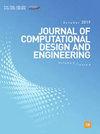PCDC:原型辅助双对比学习与深度可分离卷积神经网络,用于新运行条件下永磁同步电机的少量故障诊断
IF 4.8
2区 工程技术
Q1 COMPUTER SCIENCE, INTERDISCIPLINARY APPLICATIONS
引用次数: 0
摘要
永磁同步电机的故障诊断在工业领域至关重要,它能确保用户安全,最大限度地减少事故造成的经济损失。然而,最近的故障诊断方法,尤其是使用深度学习的方法,需要大量标注数据,而这些数据在工业领域可能无法获得。为了缓解数据不足和/或实现未见故障诊断,最近在旋转机械的故障诊断中应用了少量学习。然而,仍然存在两个主要障碍,特别是:a) 模型在新操作条件下的通用能力有限;b) 精确诊断故障类型的判别特征不足。针对这些局限性,本研究提出了一种原型辅助双对比学习与深度可分离卷积神经网络(PCDC),用于永磁同步电机在新工况下的少量故障诊断。通过提取故障引起的幅值和频率调制特征以及消除电机定子电流信号中运行条件的影响,提取了运行稳定的故障特征,以加强 PCDC 在新运行条件下的泛化。提出了原型辅助双对比学习,通过学习局部和全局相似性特征,即使故障特征彼此相似,也能清晰地区分故障类别,从而提高了实例区分能力,同时缓解了过拟合问题。实验结果表明,在新的运行条件下,所提出的 PCDC 在少发故障诊断任务中的表现优于对比模型。本文章由计算机程序翻译,如有差异,请以英文原文为准。
PCDC: Prototype-assisted dual-contrastive learning with depthwise separable convolutional neural network for few-shot fault diagnosis of permanent magnet synchronous motors under new operating conditions
The fault diagnosis of permanent magnet synchronous motor is of vital importance in industrial fields to ensure user safety and minimize economic losses from accidents. However, recent fault diagnosis methods, particularly the methods using deep learning, require a massive amount of labeled data, which may not be available in industrial fields. Few-shot learning has been recently applied in fault diagnosis for rotary machineries, to alleviate the data deficiency and/or to enable unseen fault diagnosis. However, two major obstacles still remain, specifically: a) the limited ability of the models to be generalized for use under new operating conditions and b) insufficient discriminative features to precisely diagnose fault types. To address these limitations, this study proposes a Prototype-assisted dual-Contrastive learning with Depthwise separable Convolutional neural network (PCDC) for few-shot fault diagnosis for permanent magnet synchronous motors under new working conditions. Operation-robust fault features are extracted to reinforce generalization of PCDC under new operating conditions by extracting fault-induced amplitude and frequency modulation features and by eliminating the influence of operating conditions from the motor stator current signals. Prototype-assisted dual-contrastive learning is proposed to clearly distinguish the fault categories even when the fault features are similar to each other by learning both local- and global-similarity features, which increases the instance-discrimination ability while alleviating an overfitting issue. Experimental results show that the proposed PCDC outperforms the comparison models in few-shot fault diagnosis tasks under new operating conditions.
求助全文
通过发布文献求助,成功后即可免费获取论文全文。
去求助
来源期刊

Journal of Computational Design and Engineering
Computer Science-Human-Computer Interaction
CiteScore
7.70
自引率
20.40%
发文量
125
期刊介绍:
Journal of Computational Design and Engineering is an international journal that aims to provide academia and industry with a venue for rapid publication of research papers reporting innovative computational methods and applications to achieve a major breakthrough, practical improvements, and bold new research directions within a wide range of design and engineering:
• Theory and its progress in computational advancement for design and engineering
• Development of computational framework to support large scale design and engineering
• Interaction issues among human, designed artifacts, and systems
• Knowledge-intensive technologies for intelligent and sustainable systems
• Emerging technology and convergence of technology fields presented with convincing design examples
• Educational issues for academia, practitioners, and future generation
• Proposal on new research directions as well as survey and retrospectives on mature field.
 求助内容:
求助内容: 应助结果提醒方式:
应助结果提醒方式:


